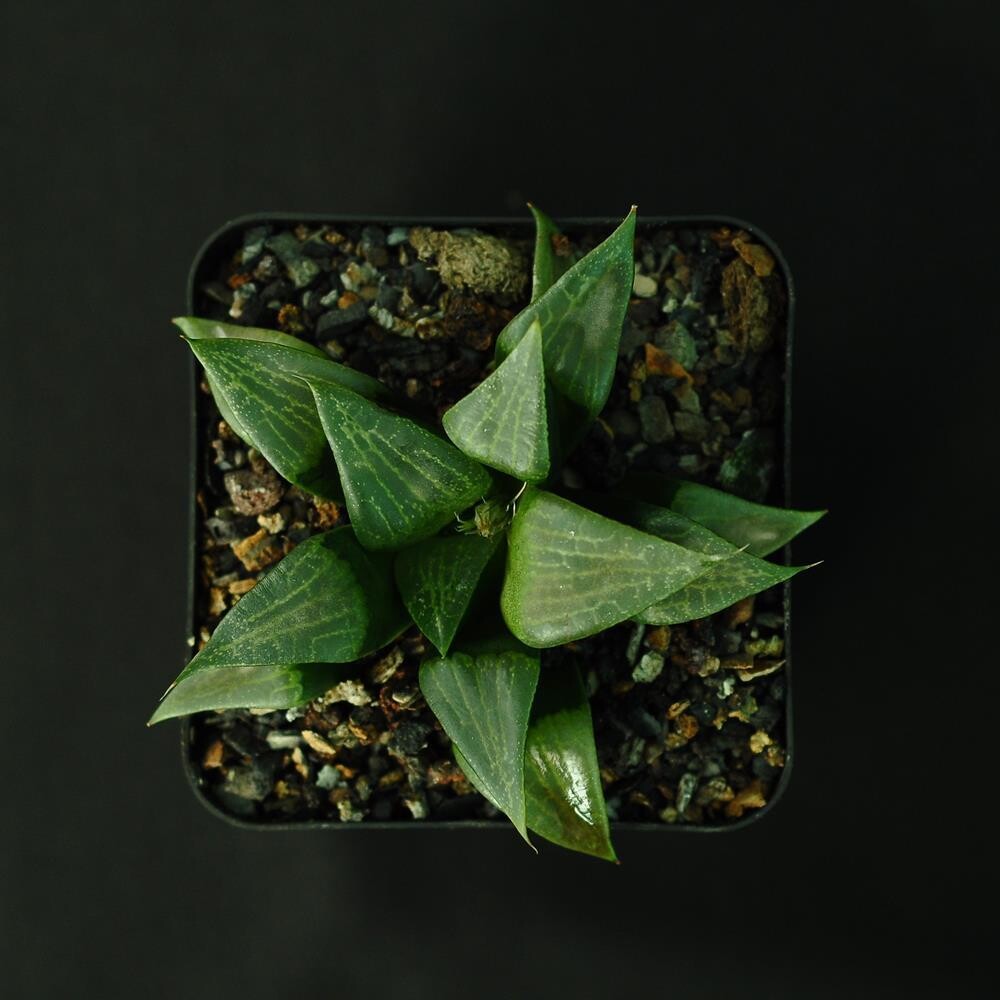Please check the Shipping Updates Page for information on shipping.
Haworthia emelyae var. comptoniana (Jpn Hyb)
Origin of Name
The name "Haworthia emelyae var. comptoniana (Japanese Hybrid)" reflects a rich botanical lineage. "Haworthia" is named after Adrian Hardy Haworth, a British entomologist and botanist. Haworthia emelyae was described by von Poellnitz in 1937 and named in honour of Mrs Emely Ferguson whom von Poellnitz presumed to have been the collector. The variety name is in honor of the South African botanist Professor RH Compton (1886 - 1979). The designation "(Japanese Hybrid)" indicates that this specific variety is a result of selective breeding practices in Japan, where horticulturists have a longstanding tradition of cultivating and hybridizing unique succulents.
Technical Description of Plant
Haworthia emelyae var. comptoniana (Japanese Hybrid) is celebrated for its striking appearance. It forms compact, rosette clusters of succulent leaves. These leaves are typically deep green with translucent areas near the tips, creating a window-like effect. They may display white or light green variegation or markings. The plant's overall texture and coloration are quite variable, a hallmark of its hybrid status. While flowering is rare, when it occurs, the flowers are small, typically white or pale pink, and less significant compared to the foliage.
Origin of Plant
The original Haworthia emelyae is indigenous to South Africa, known for its diverse and unique succulent flora. The varietal distinction "comptoniana," and the subsequent hybridization in Japan, suggest a cultivation journey that spans continents, reflecting both the plant's African roots and the Japanese influence in its selective breeding for desirable traits.
Conservation Status
As a specifically cultivated hybrid, Haworthia emelyae var. comptoniana (Japanese Hybrid) doesn't have a distinct status in conservation terms. However, the practice of cultivating these plants helps to alleviate pressure on wild species, contributing to the conservation of biodiversity.
Care Instructions
Haworthia emelyae var. comptoniana (Japanese Hybrid) prefers bright, indirect light and should be shielded from prolonged direct sunlight, which can scorch its leaves. It thrives in well-draining soil, typical of succulents. Watering should be moderate, allowing the soil to dry completely between waterings, and reduced during the winter. This plant is not frost-hardy and should be protected from cold temperatures. While fertilization is not crucial, a diluted succulent fertilizer can be applied sparingly during the growing season.
